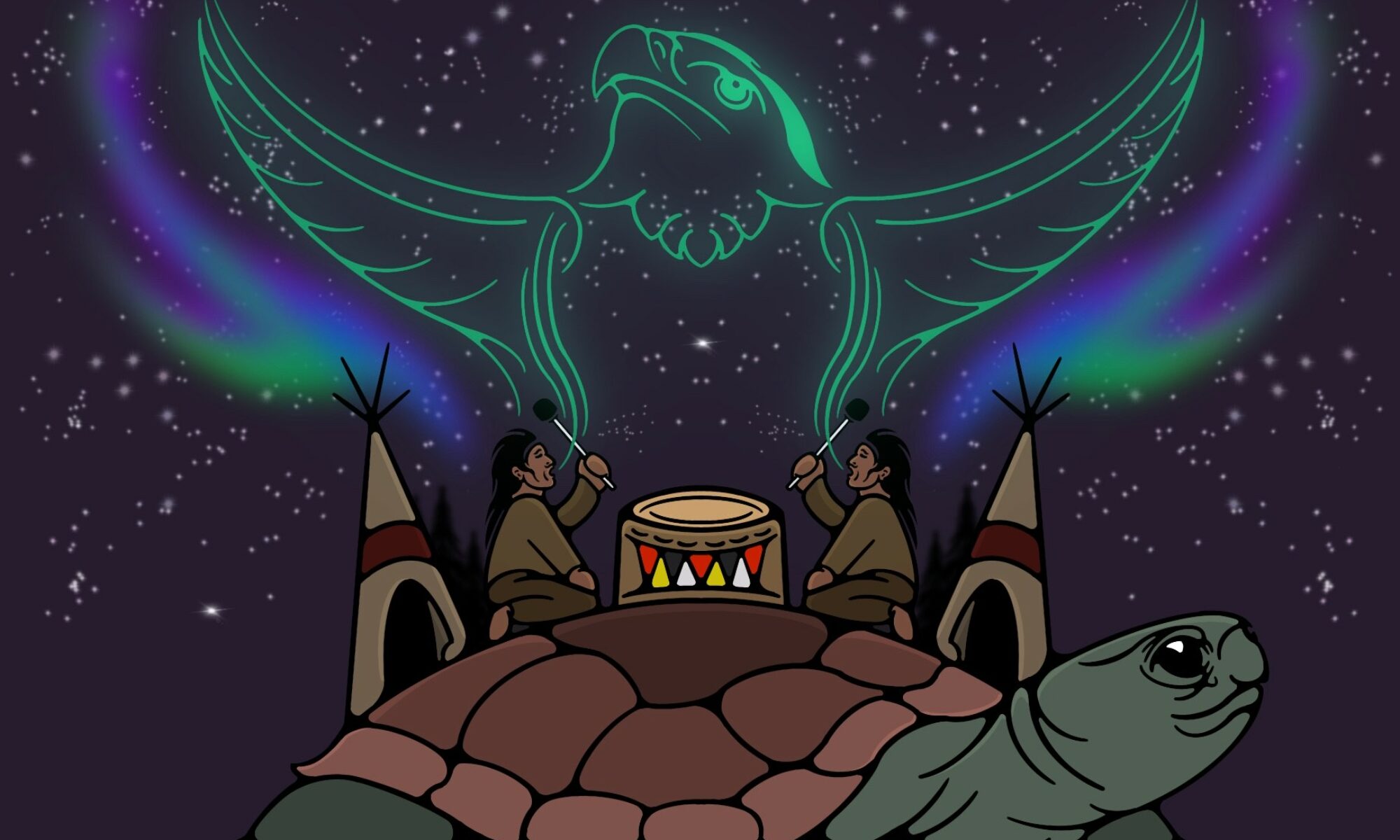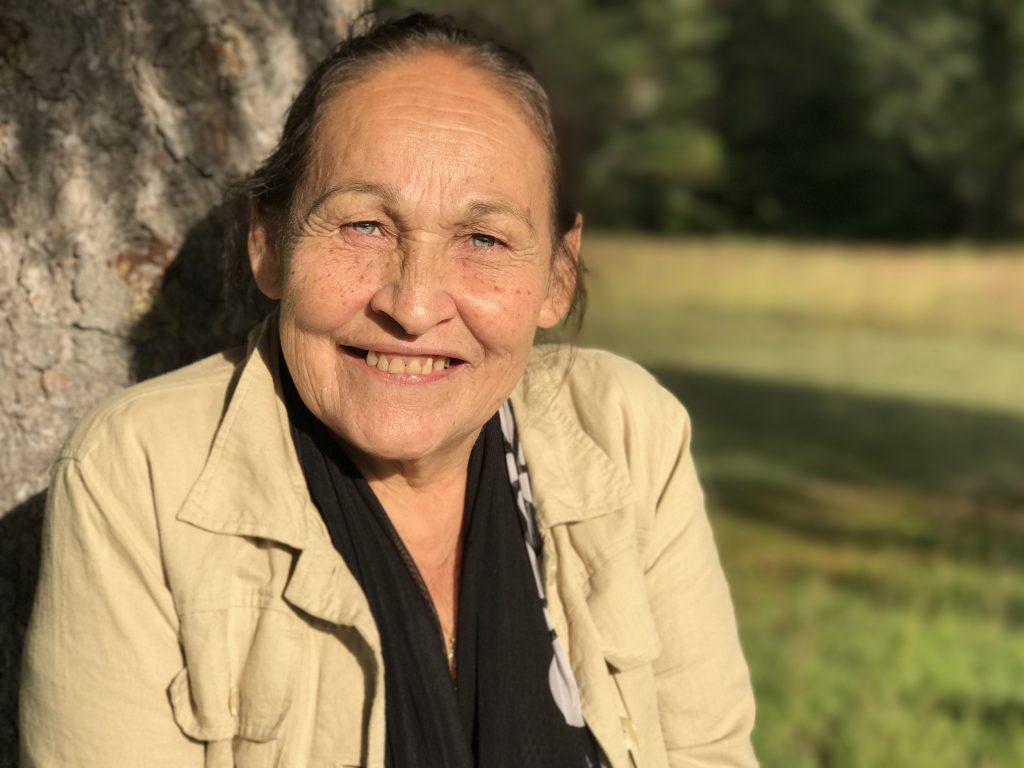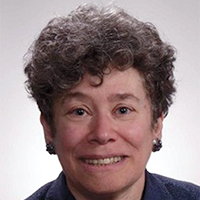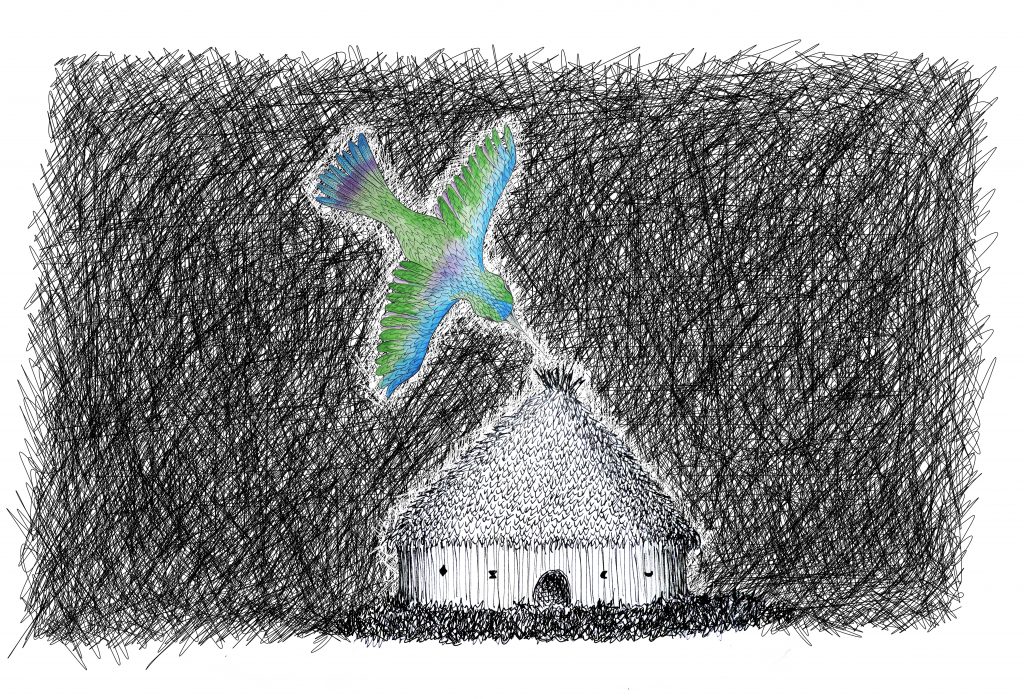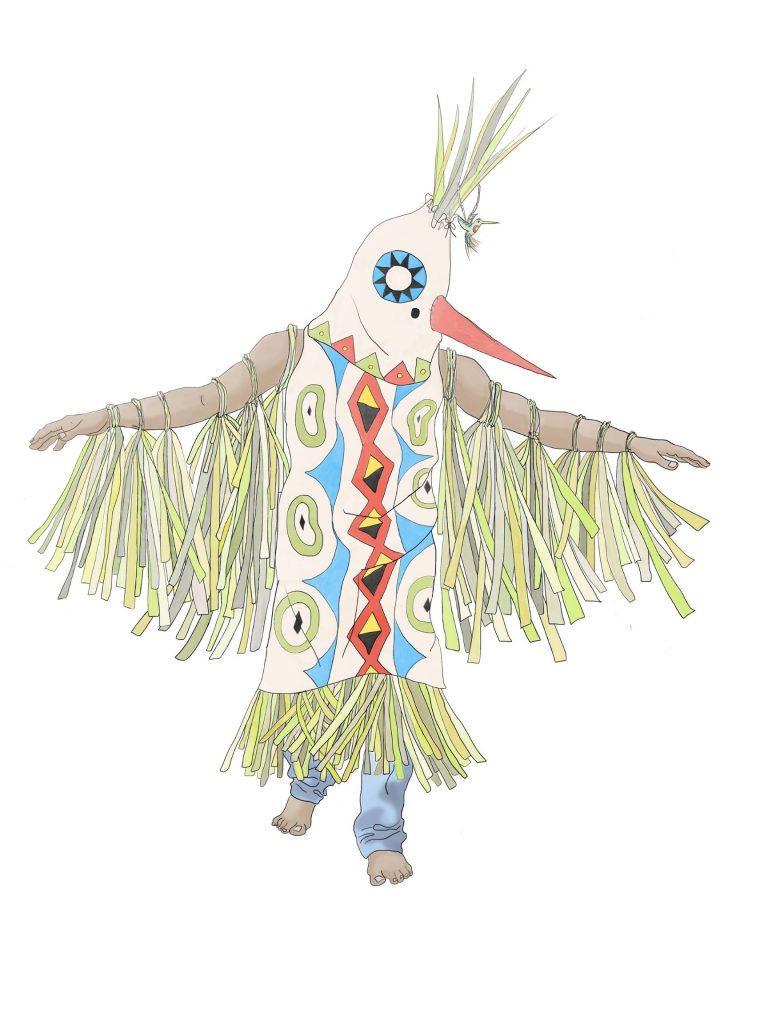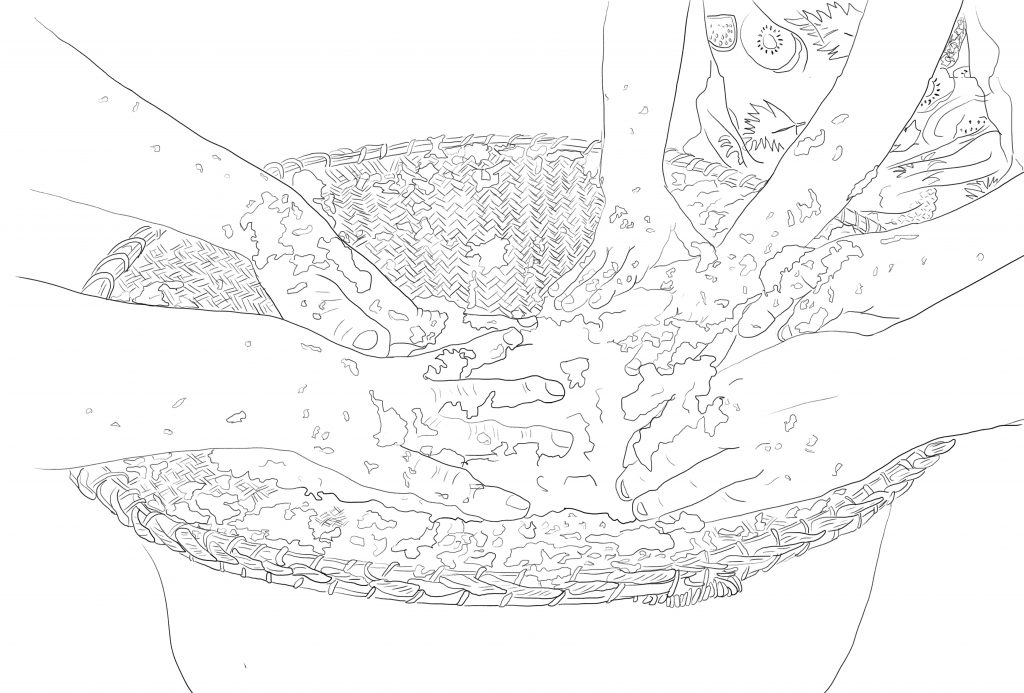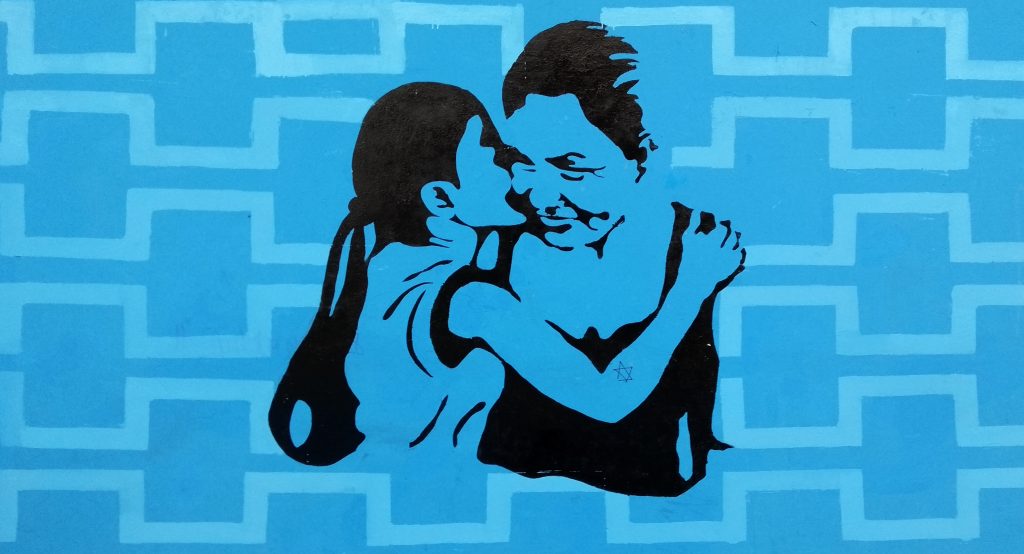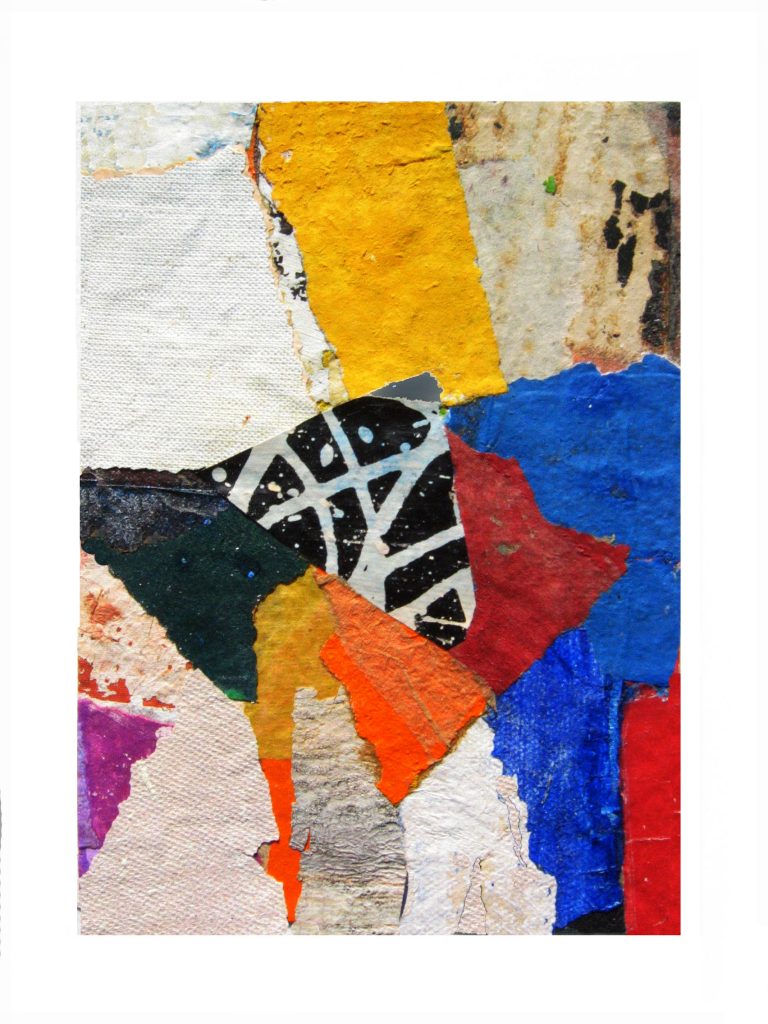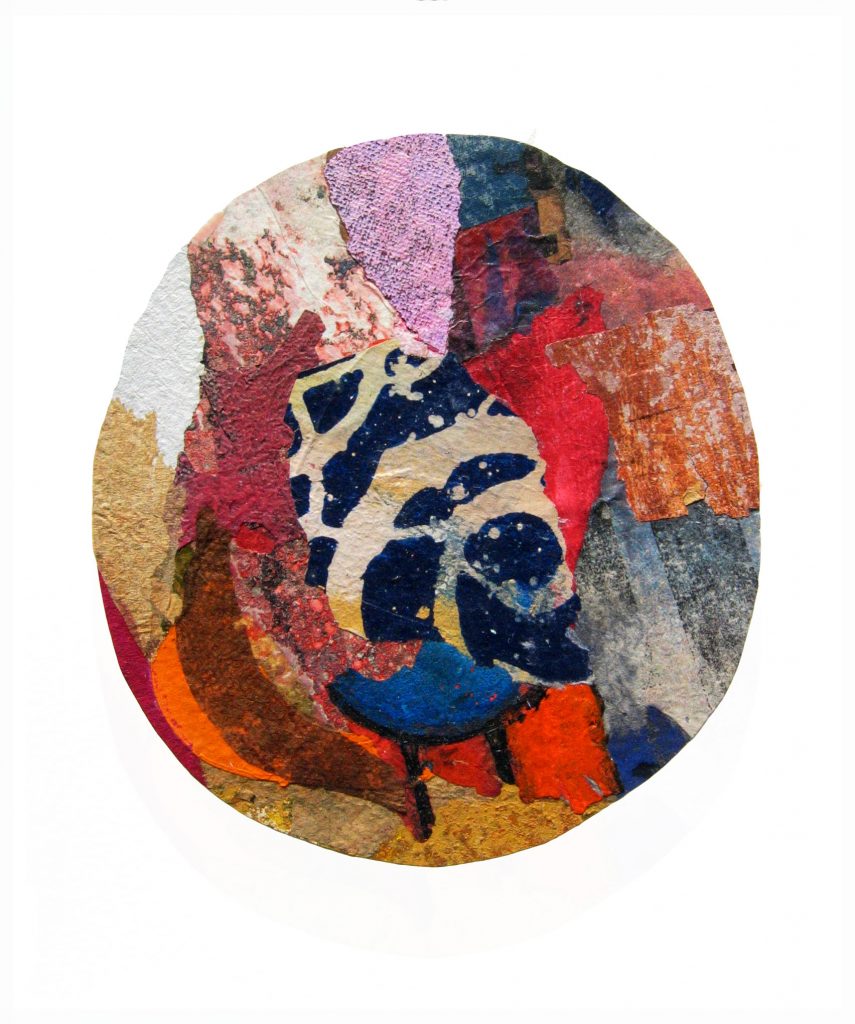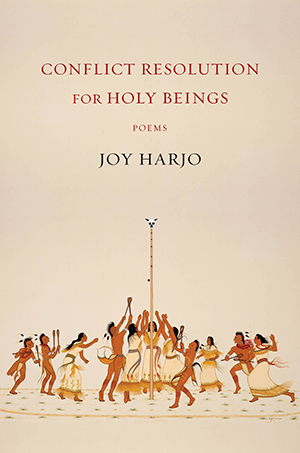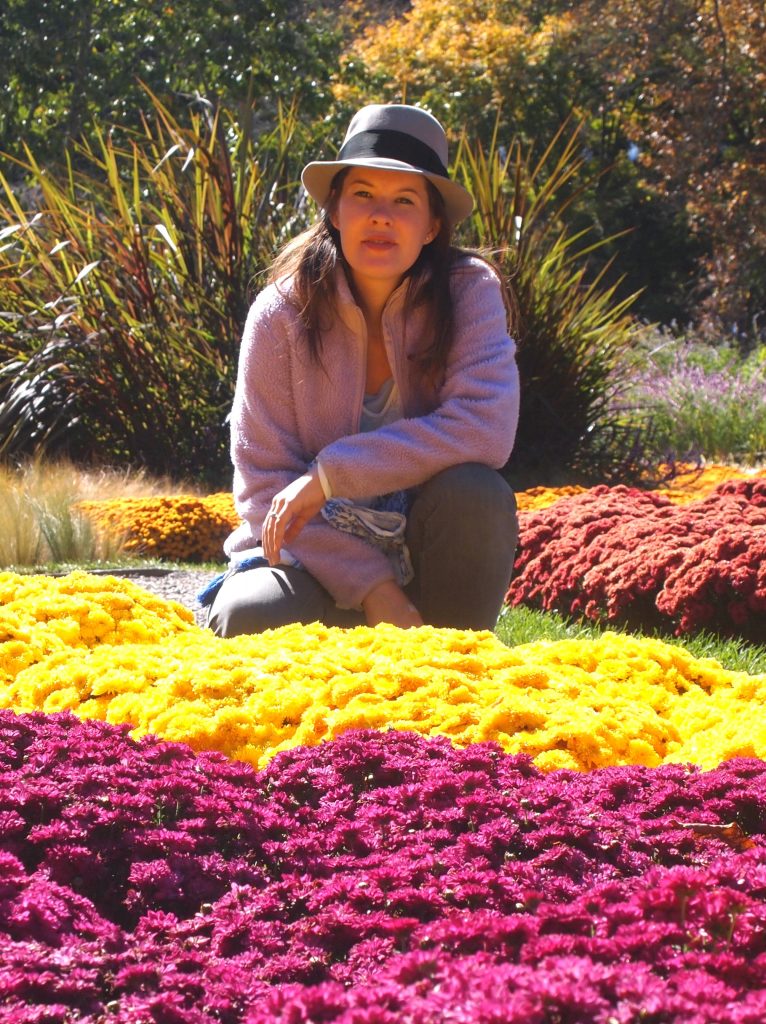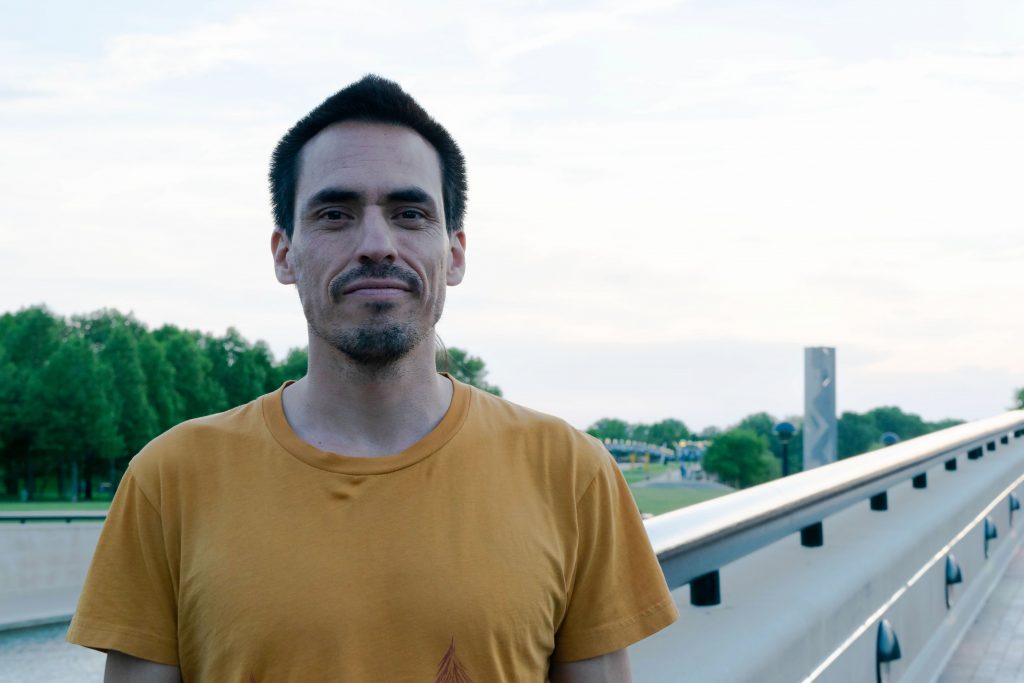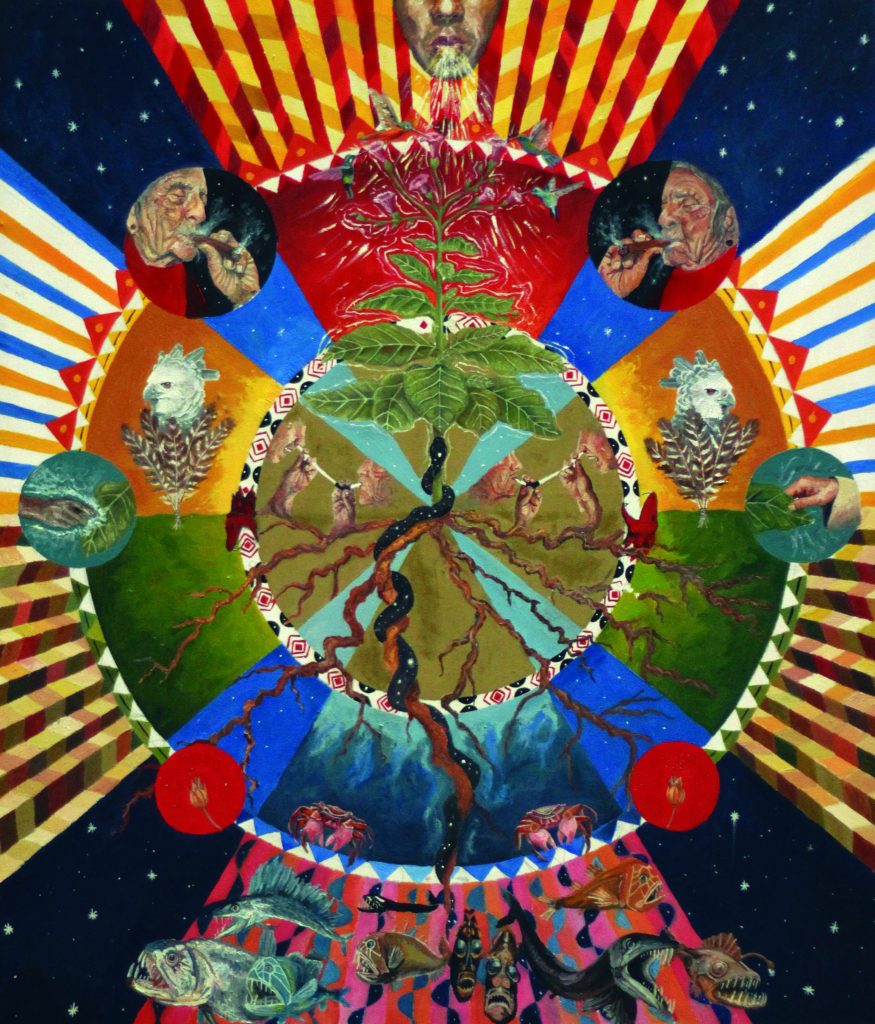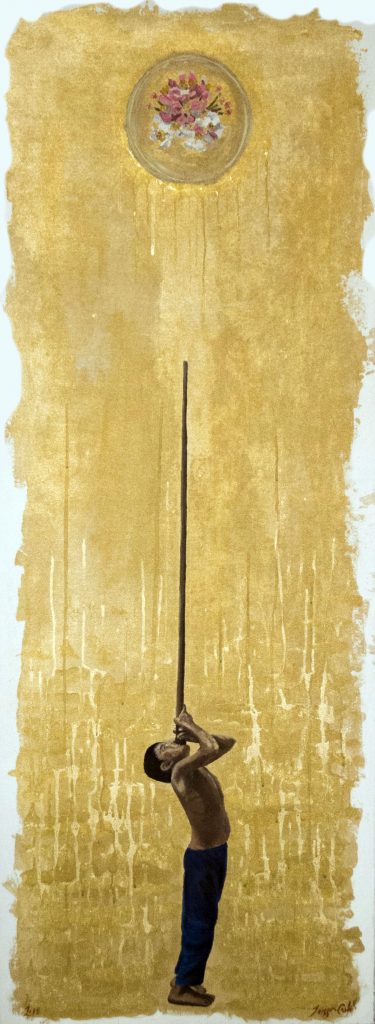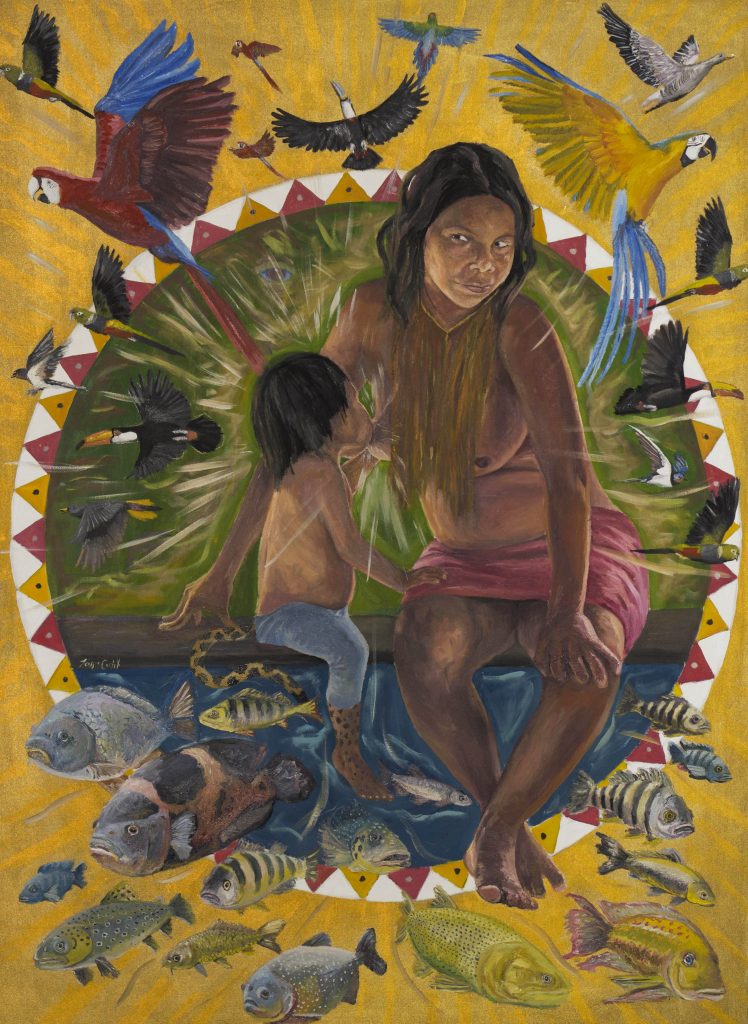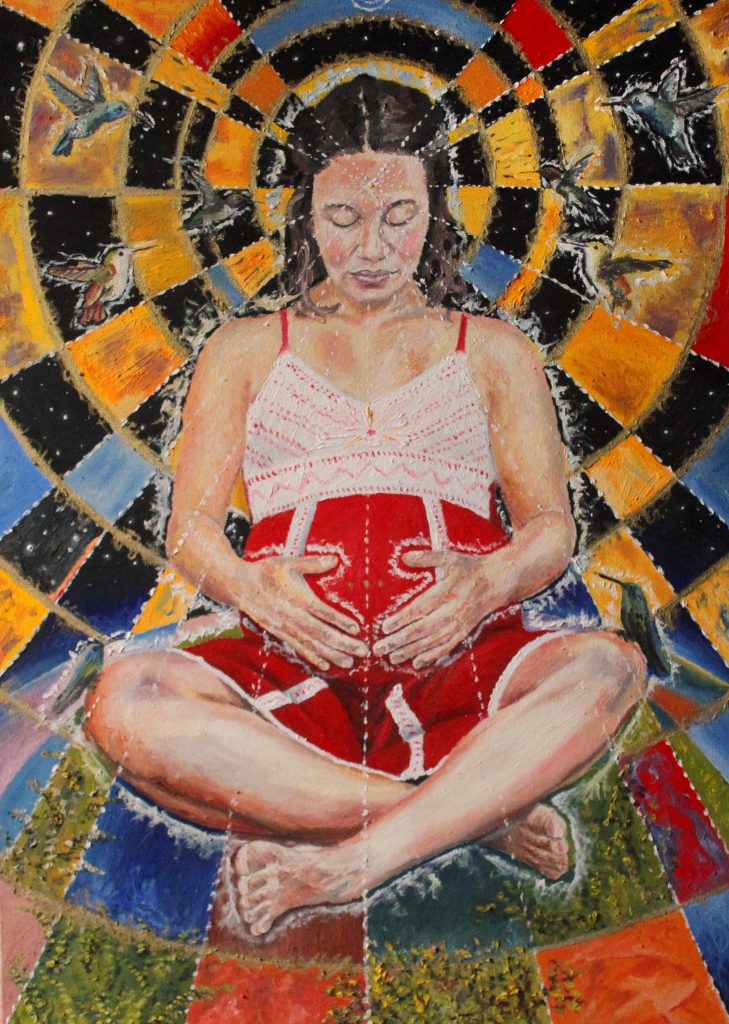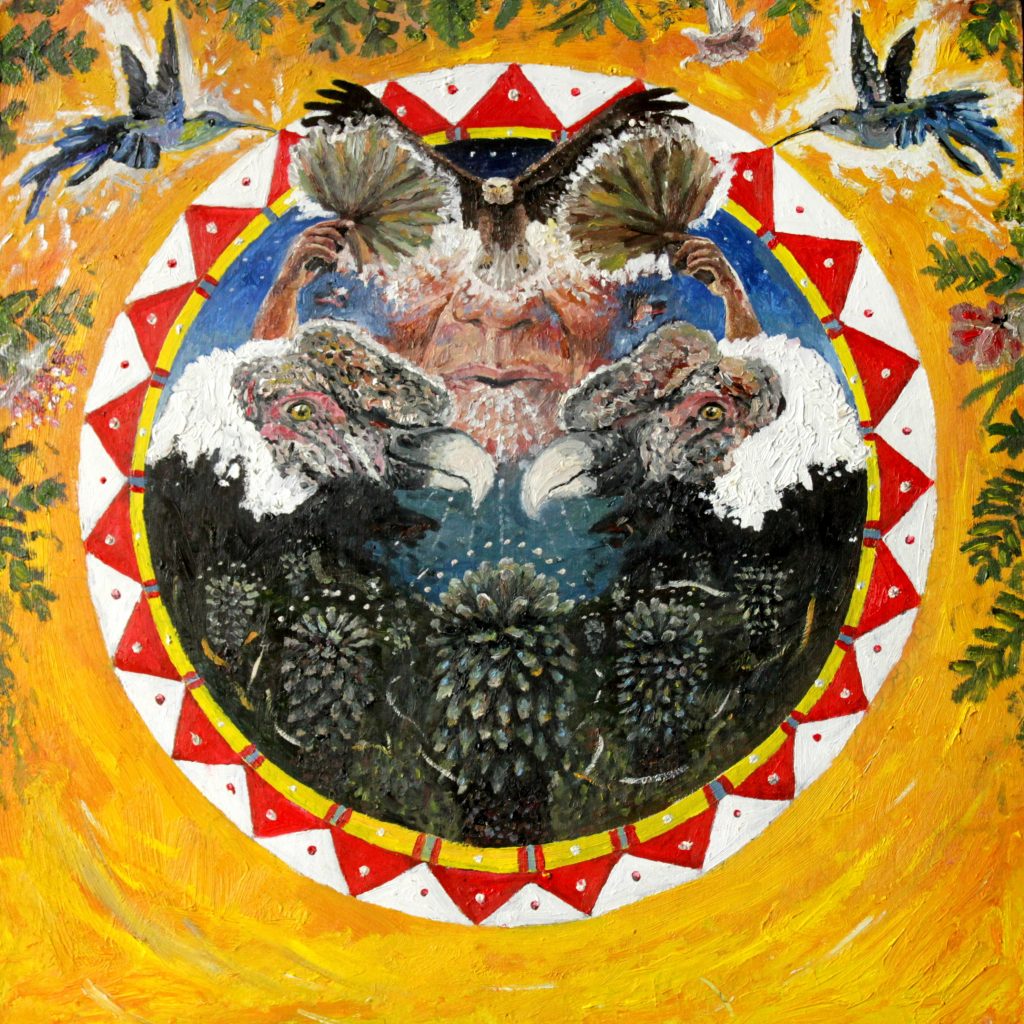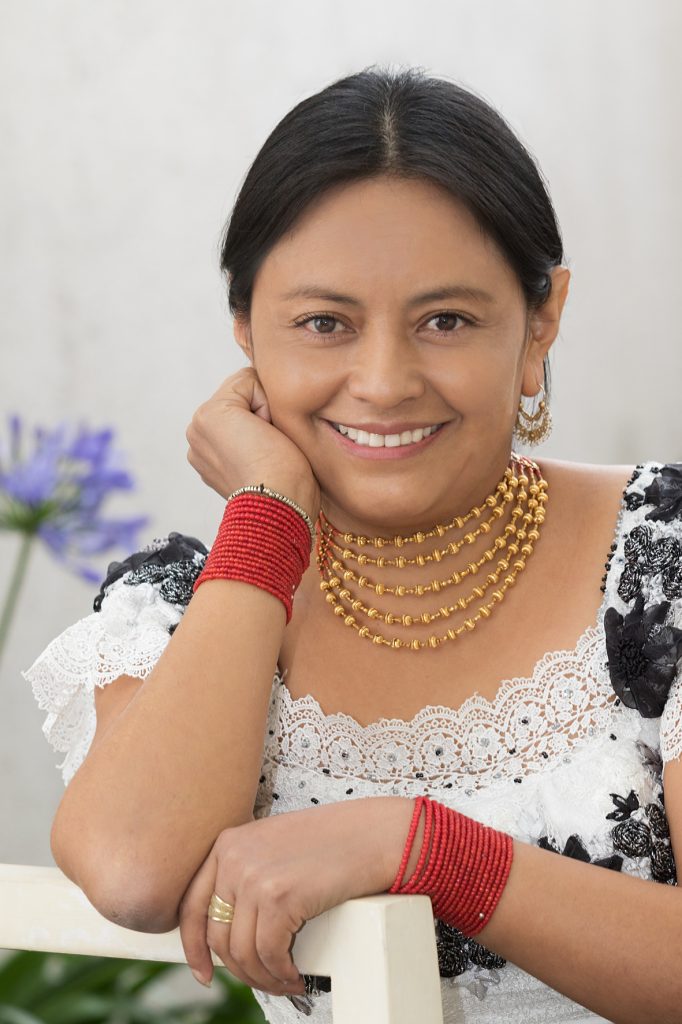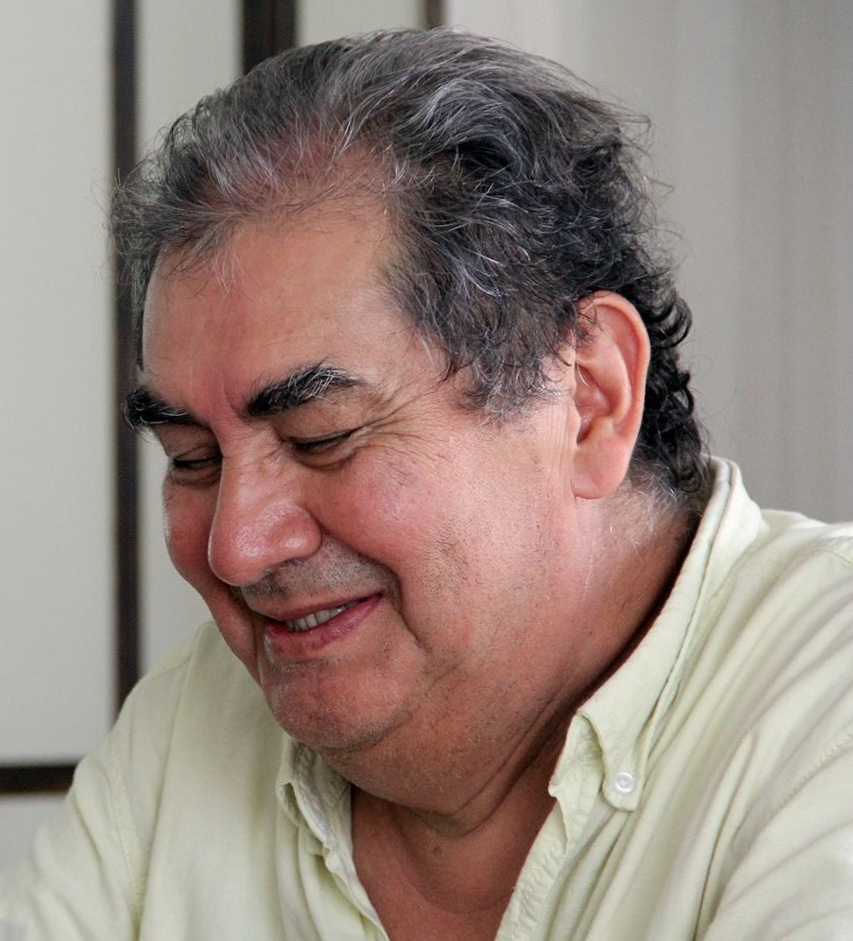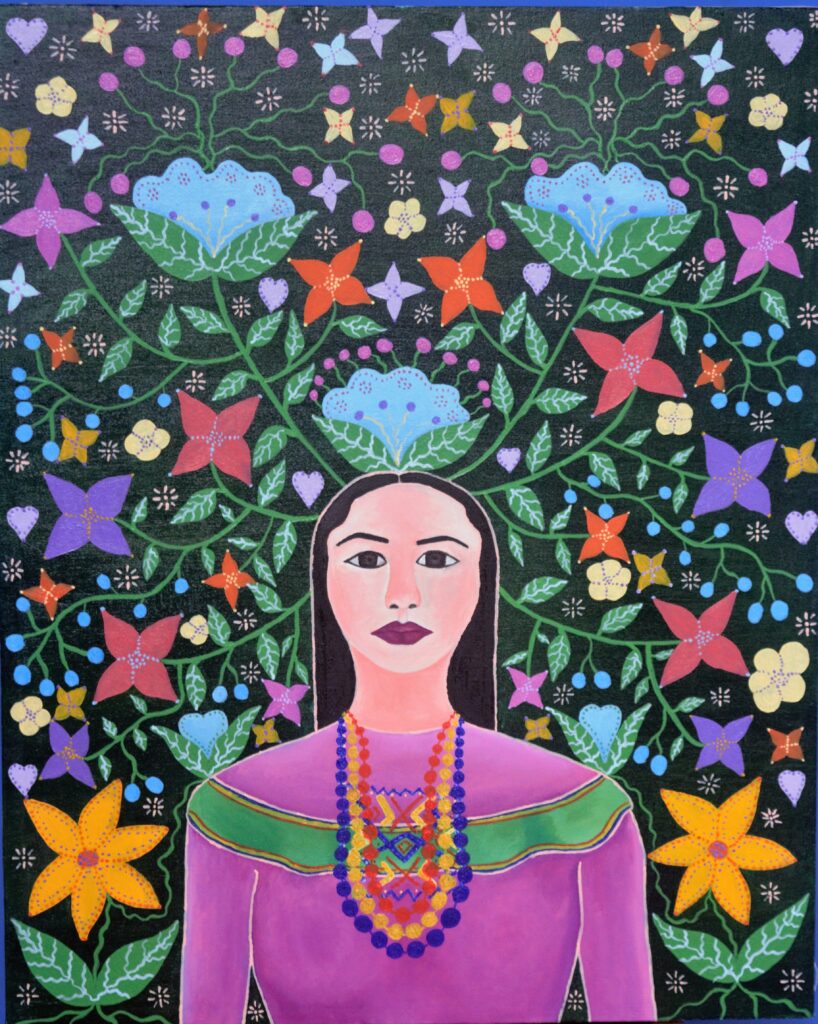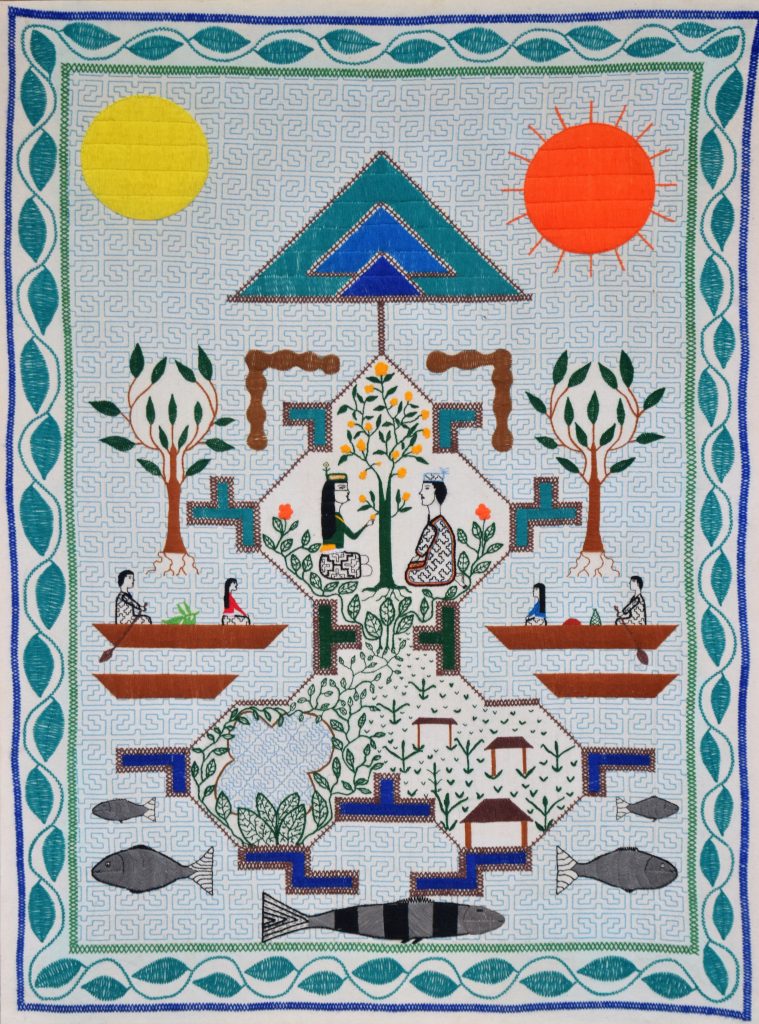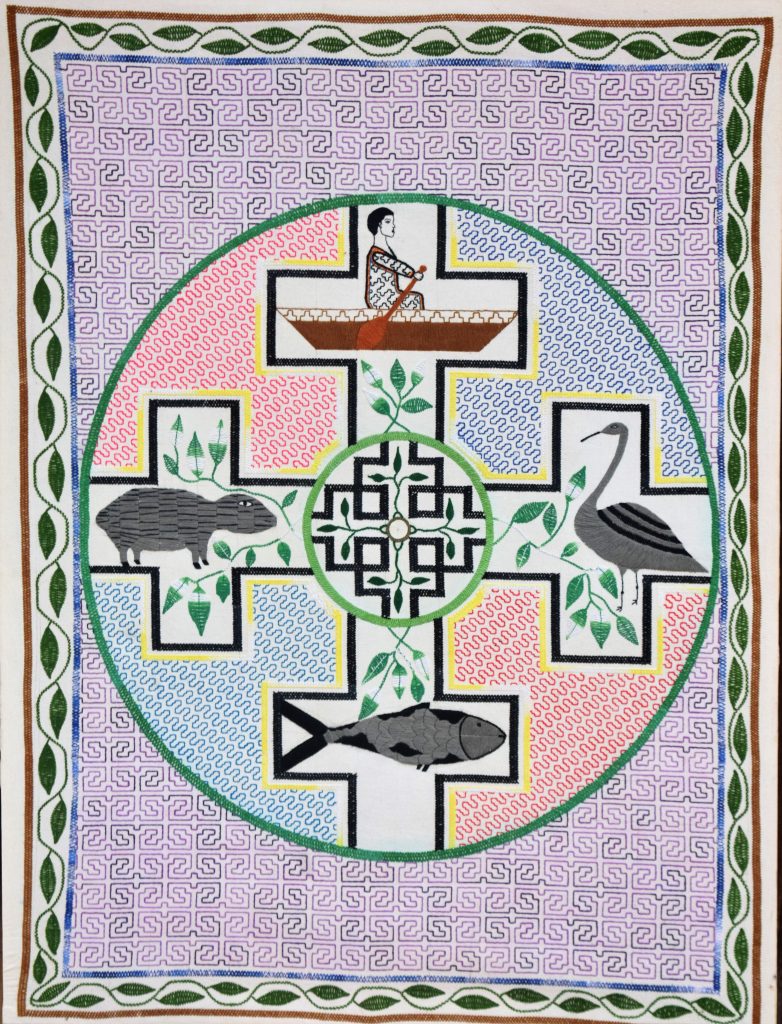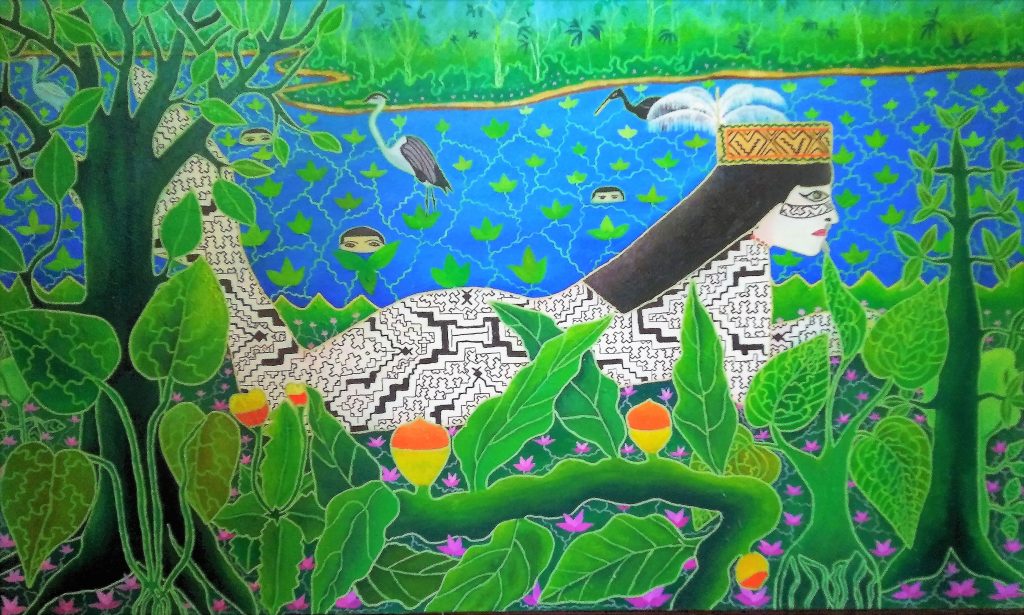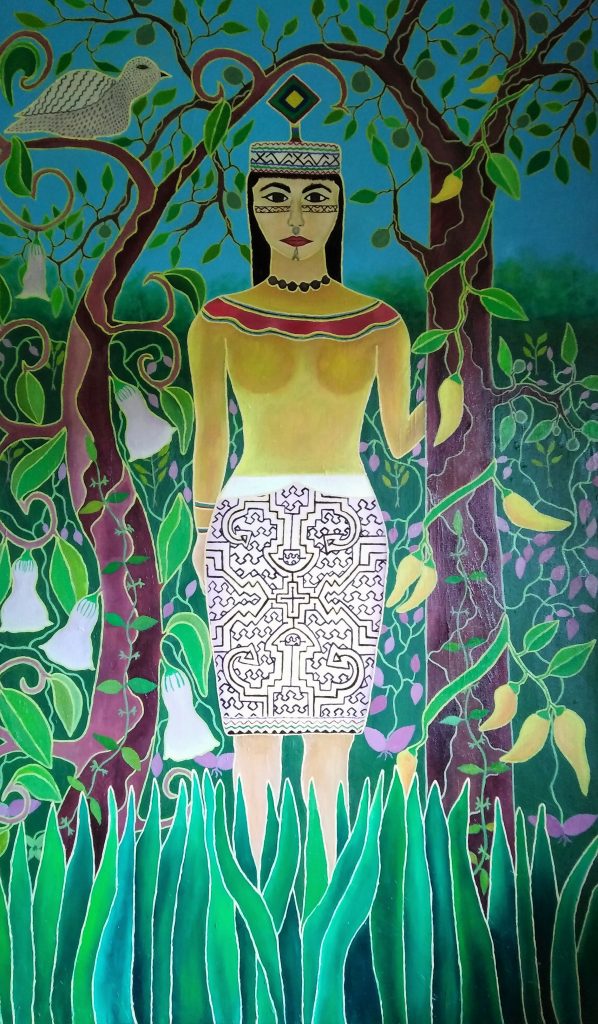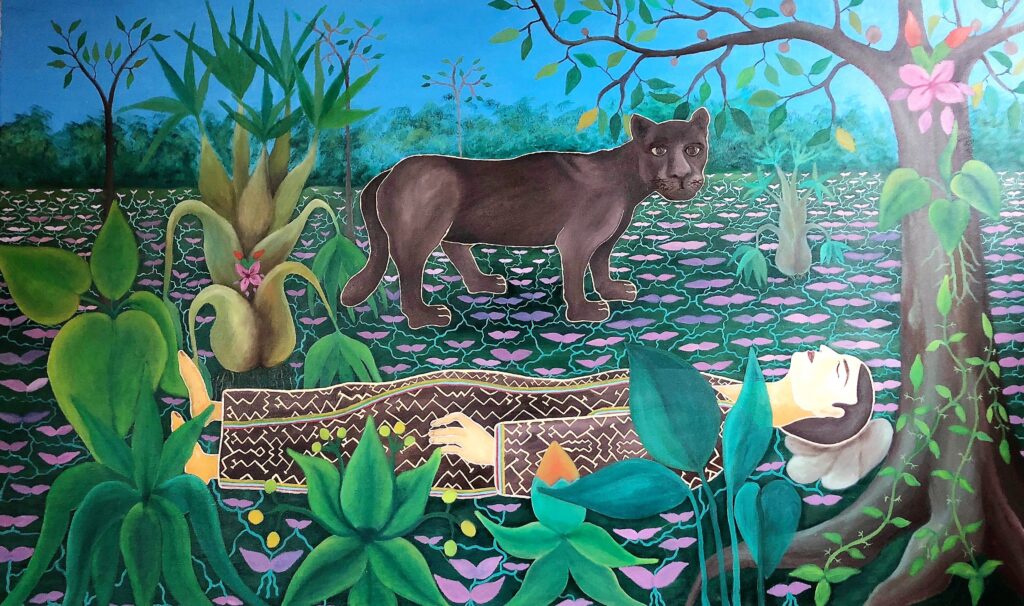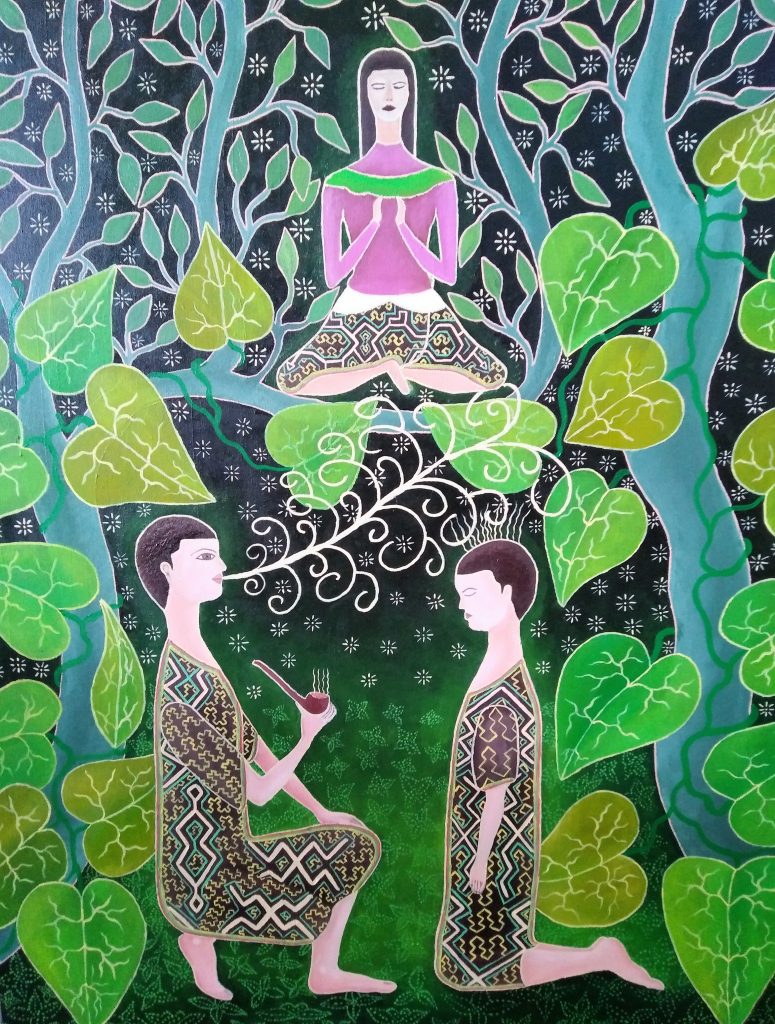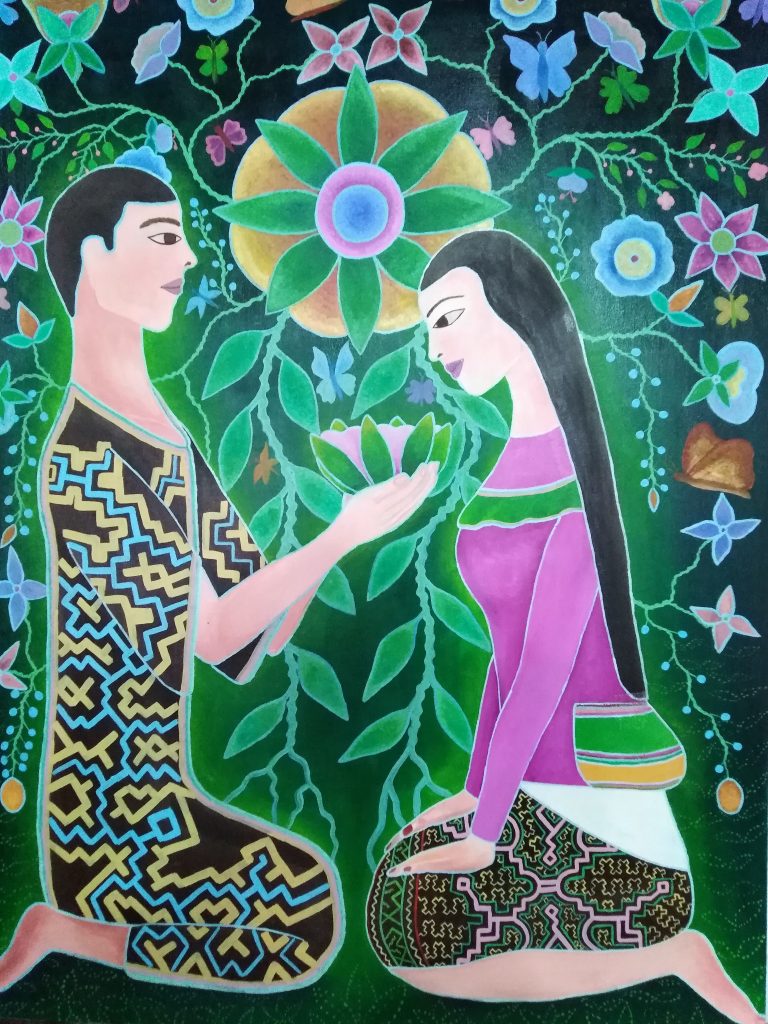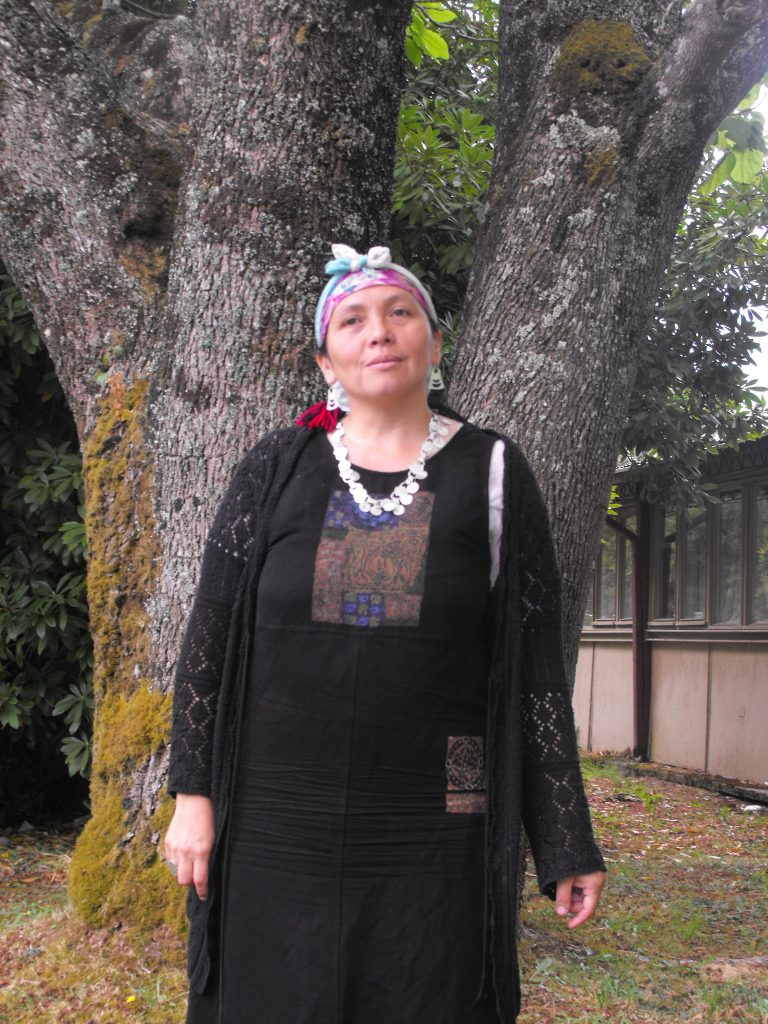
Adriana Paredes Pinda is a Mapuche-Huilliche indigenous poet from Osorno, Chile. She has published Ül (2005) and Parias Zugun (2014), and many of her poems also appear in poetry anthologies such as Hilando en la memoria (2006) and 20 poetas mapuche contemporáneos (2003). Her poetry has been awarded literary prizes as well as several scholarships. She is also an academic who teaches at Universidad Austral de Chile and a machi, a Mapuche shaman that heals using remedies, teas, prayers, songs and dances.
Her poetry brings her ritual knowledge to her poems. For example, her poem “Sanación” (“Healing”) focuses on the experience of a young Mapuche woman who is sick physically and spiritually because she has moved away from her community. As a result of this separation, this woman harbors deep internal anguish about her state of being split between two cultures: the Mapuche and Chilean cultures. The inner division of this woman is caused by cultural loss and assimilation to the wingka or non-Mapuche culture. Therefore, it must be the Mapuche machi who goes in search of the missing half of her spirit through a machitún, a healing ritual that restores health, and that is performed in this poem. She writes in Spanish, but her poetry is profusely inhabited by words in Mapudungun and concepts from the admapu, the mapuche traditional norms and practices. In the poem “Sanación” there are many words in Mapudungun interspersed within a text written in Spanish, such as names of plants and herbs (foye, palke), musical instruments (trutruka, pvfvllka, trompe), among other important elements of Mapuche tradition.
“Lenguas secretas” (“Secret tongues”), another of her poems, stages a ritual performed on the top of a mountain that the poetic subject must do in order to get in touch with the “language of the land”, literal translation of “Mapudungun”. Hence, the poem describes how the evening ceremony is urgent: the spirits will help overcome language barriers that separate the subject who is speaking from the Mapuche community it wishes to belong to. In the end, the poetic voice affirms that in order to fully join the community one must be receptive to the language of the ancestors, and the ritual makes this union possible in this poem. In her poetry Paredes Pinda brings awareness to the Mapuche historical struggle for recognition of their lands and their rights in Chile. In the selected fragments of Parias Zugunshe looks to stress the cyclical nature of events in Mapuche history and the need to restore the land’s equilibrium and end the destructive actions of forestry companies. (ANDREA ECHEVERRÍA)
Healing
Fuchotun
is what is missing. Laurel cleanse these airs,
clear the paths.
The one that guides me
throws foye in the shadows, a moon
erupts biting the spirits. She will say when.
Meantime I have the smells,
I wake up with my nose stuck
to the watershed,
the dream’s lick.
Fuchotu fuchotu
pieyfey tañí ñaña
amulerkeita pu chollvñ mamvll.
The girl will sing her old song if she knows
the mother of her root, if she fills her mouth
with healing herbs. Coltsfoot
for the sorrow that spills
in asthmatic cough through the chest, palke
for the feverish head without trarilonco,
matico will heal the scar of childbirth
when the light comes.
Now her eyes are stuck in cement,
there are no maternal moons in the buildings,
no sun comes in, no air or fire.
The girl will have to do machitún.
The wood’s buds
push on their tongues,
a pewen of aroma in childbirth.
Her spirit had left, they say.
We made campfires with a full moon for her home,
her arms did not want Mapuche that’s why her sorrow,
but she surrendered with foye
while we sang. Trutruka,
pvfvllka, ancient trompe with raulí
to make her fall in love.
A boy asked for her return,
so that we would get rid of the black dogs.
The girl did not want to be kidnapped
in another world, but her heart was broken
in two
that’s why the grief and white lice.
We ask the little mother to knead the split
where she died. Then came good smells,
Treng-Treng’s earth filled her hands,
returned the spirit of the sick girl
because the mother went looking for it.
“I had to go look for it where it got lost.”
Something is missing from this house –they told me.
Therefore it will be necessary to inhabit it,
the old tiger is on the prowl.
Pu aliwen.
Open the muttering rooms, let him
take what is his. Get on
the secret pulses.
Let the fire come, consume us in its living embers
the smoke, the millenary secretions.
I allow you, old tiger, to comb my hair.
✷
Secret languages
The machi said it, do not repeat it.
She was in a trance. Go
to the mountain to wait for the language of the earth
to also open for you.
We will go to the hill when the full moon,
we will sing to you there. The only way:
to listen to the spirits at dawn.
If the rafts of death did not take the girl
it was for a reason. That the dream took her,
it does not release her anymore. She has to keep dreaming.
The spirits appear, only some
can enter the lagoon.
Let the warrior of luminous braids watch out.
They take her suddenly. We do not see her anymore.
✷
Memories
I am the one with the late-night hair
wet and urgent in the rain
of lost nguillatunes.
The ashes unearth the light of my insides,
the tigress kneads her incarnation among the hot
mountains. I howl in boldness
to gallop on the last star of my blood
on the world’s palm.
Burn lost moon,
I came to the mountain to suck your heart. I will not
go in the whiteness of your breath.
I am the one who flies with three fingers,
who sings fire from her kona’s mouth.
I have been well appointed
Kanvkvmu,
the other root.
Twelve knots has the birthsnake,
tremble wuinkul.
And there were twelve dreams for your twelve nipples.
Giving birth to
the omens of the kultrung in your body. Your legs
extended to the beds of the Bio-Bio,
one of those who knew resistance.
The dark one was abandoned of snow,
half-spirit, half-flesh
returns death forward
to weave the metawe of origin
that was sung blue. The skin
of the Mapuche has the writing.
I was given the words
like a volcano that burns and bleeds. Memory
of unlearned alphabets.
The nipples of time spawned,
fertile were the lands until dawn
when I knew
that my hand was not the writing.
They call you in rauli and alerzaria tongues
Treng-Treng is falling
Why do you not listen to the children?
Plant cinnamon trees for the time of the buds.
Grandmother grandfather,
the wuinkul falls in front of
my mother’s house.
They are going to look for the power at the mountain,
the marshes only allow some.
The pastures are too thin for you.
The woman carries the music,
the one whose spirit
was taken by the bird.
Grandmother grandfather,
I'm going to Quinquén to see the snow,
to hatch your broken dream,
before it goes silent
I’m going alone.
Apochi küyen mew
Amutuan
Kuze fücha
Ülcha weche
the snow is green.
✷
They call you in rauli and alerzaria tongues
Treng-Treng is falling
Why do you not listen to the children?
Plant cinnamon trees for the time of the buds.
Grandmother grandfather,
the wuinkul falls in front of
my mother’s house.
They are going to look for the power at the mountain,
the marshes only allow some.
The pastures are too thin for you.
The woman carries the music,
the one whose spirit
was taken by the bird.
Grandmother grandfather,
I’m going to Quinquén to see the snow,
to hatch your broken dream,
before it goes silent
I’m going alone.
Apochi küyen mew
Amutuan
Kuze fücha
Ülcha weche
the snow is green.
✷
Three fragments of Parias Zugun
.. lukutues foliles srayenes
Ilwen
all the stone’s writing
at Txem-Txem’s moldering back
in ominous suspicion
that voracity of burning nipples
archaic
nipples
wheezing
usurped litanies
of when the great snake Txem-Txem
still reigned
and he had a warm embrace
because his leather was
live ember
of the living
the seeds sang in his hands
Txem-Txem
kissed them
with his breath of all the forests
alerzales foyehuales
copihuales
languages and languages all blossomed
in the puelche’s primary caress. . . (33-34)
(...)
…If my Genechen language
does not twist
my already frayed skin
–’I looked for it and did not find it’–
the language of the great love
running the tongue over
Txem-Txem’s lacerated back
the language of the great love
the kallku language
the despised
‘Come and see the blood of the forestry companies’
open
mooing
–Forests in coals ablaze–
–Iñche ta zugun– (36)
(...)
…Tree language
one can hear it roar in the languages of the sea
1960
champurria
the heartbeat of the hushed lament
–and in a spiral I go singing-
–Kay Kay zugun-
it looked at me
the snake
its eyes
wormwood honey
they said the infinite
–give me the uncertain
give me the flame
solsticious and fatuous
I am the aroma in which the people get lost
murta and pennyroyal
the language that cheats. (112)
Glossary
- Nguillatun: Great Mapuche ceremony.
- Kona: Young warrior.
- Wuinkul: Hill.
- Kultrung: Ritual drum used by the machi or Mapuche shaman.
- Metawe: Small vessel or pitcher.
- Fuchotun: To perform a cleansing ritual with the burning of medicinal plants.
- Foye: Sacred autochthonous tree, also called canelo.
- “Fuchotu fuchotu / pieyfey tañiñaña / amulerkeita pu chollvñ mamvll”: “Ritual, Ritual / that’s what the aunt said / she’s walking / in search of new plants”.
- Palke or palqui: Shrub whose leaves and bark have a medicinal use.
- Trarilonco: Woven ribbon that is used as an ornament on the head.
- Machitún: Rite of healing officiated by the machi.
- Pewen: Fruit of the araucaria.
- Ruka: Mapuche house.
- Txutxuca or trutruka: Wind musical instrument.
- Püfülka: Wind musical instrument.
- Trompe: Small metallic musical instrument.
- “Pu aliwen”: “My tree”.
- Kvtral or Kütral: Fire.
- Treng-Treng (Txem Txem) and Kai Kai (Kay Kay): The mythical account of the war between Treng-Treng and Kai Kai explains the origin of Mapuche society. Treng-Treng is the serpent of the earth that fought against Kai Kai, the serpent of the sea.
- Genechen or ngenechen: Divine creator or Mapuche Supreme Being.
- “Apochi küyen mew / amutuan / Kuze Fücha / Ülcha Weche”: “With the full moon / I go / Elderly Man Elderly Woman / Young woman Young man”. Kuze, Fücha, Ülcha and Weche form the divine Mapuche family that survived the mythical war of Treng-Treng and Kai Kai.
- Lukutues: Mapuche anthropomorphic symbol representing a kneeling man. It is usually incorporated into the fabric of the female girdle (or trariwe).
- Foliles: Roots.
- Srayenes: Flowers.
- Ilwen: Dew.
- Zugun: Language or tongue.
- ‘Inche ta zugun’: “My language”.
- Champurria: Mestizo.
About the translator
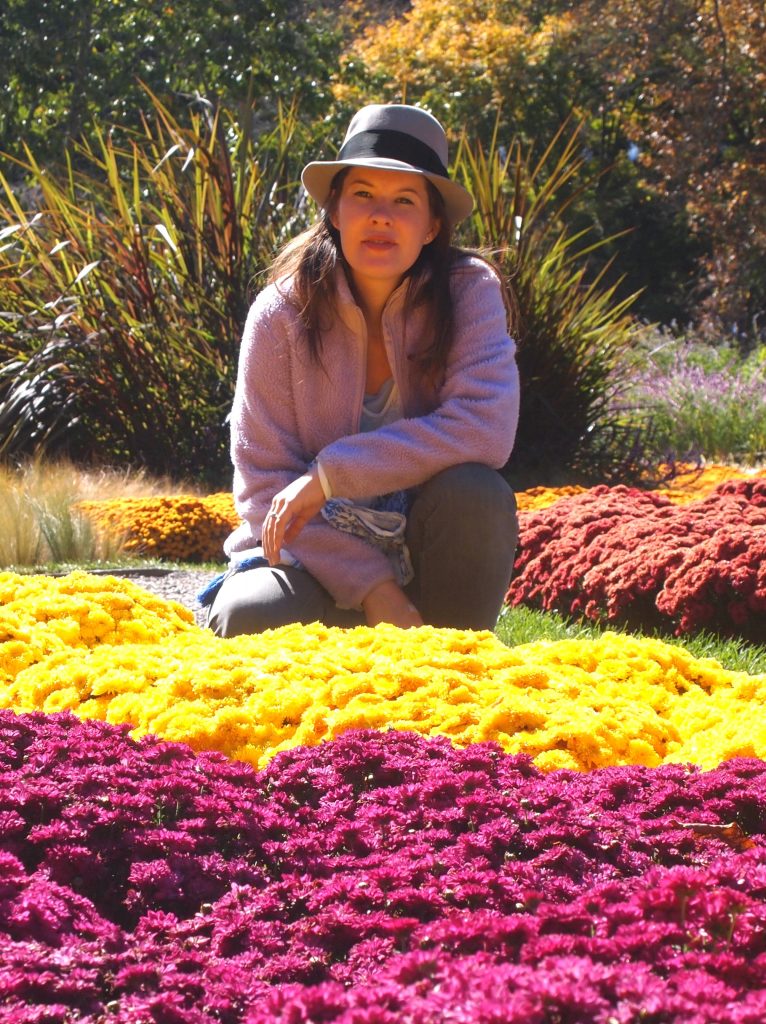
Andrea Echeverría is an Assistant Professor at Wake Forest University. She has published a book on the work of two Peruvian poets titled El despertar de los awquis: migración y utopía en la poesía de Boris Espezúa y Gloria Mendoza (Paracaídas Editores & UNMSM, 2016), and several articles on Mapuche poetry, ritual and memory. She is currently working on a book project on contemporary Mapuche poetry and visual arts.
More about Adriana Paredes Pinda
From Cantos de amor al lucero de la mañana in LALT
More about Forestry and Mapuche Land Rights in the Walmapu / Chile
The land is our mother
